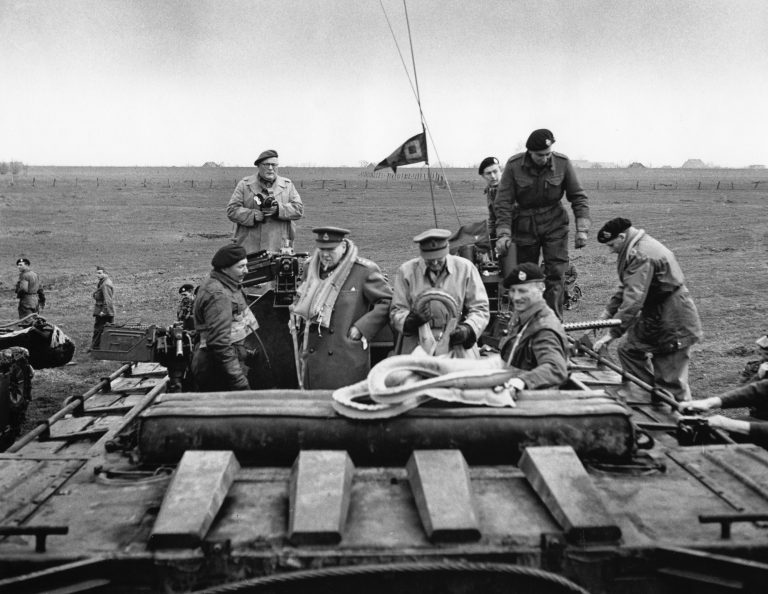The day broke fine and 174 Squadron put up 9 operations of four aircraft each. RB396 and Plt Off Frank Johnson would fly two of them with Sydney Russell-Smith as their wingman. The advance into Germany continued apace with Monty’s 21st Army Group pushing into the Rhineland from Wessel and Patton and Bradley in the south pushing in from Remagen.
The first op of the day saw them airborne for 09:15, flying as Red 3, and they proceeded to the holding point for the Visual Control Point (VCP) ground controller to call them in. With no target given, they were directed to their alternate, which was the town of Isselburg, north-west of Wessel. They attacked the town with rockets and cannon, which all landed in the target area but no clear results were seen or reported. All aircraft returned to B.100 safely after a sortie of just 45 minutes, which show how close to the frontline 174 Squadron was based.
Shortly after RB396’s return, the next set of four Typhoons departed for their cab-rank. But the lead aircraft, flown by Flt Lt D.C. Nott crashed on takeoff. The remaining three aircraft got away ok, Nott was unhurt and his Typhoon would be repaired and returned to service. On such a busy day, this could have been disastrous for the wing operating out of Goch.
The interior of “G Air” Command vehicle. “G Air” is responsible for all air support within the Corps and sets in motion bombing by Allied planes of enemy concentrations and Typhoon RP attacks on tanks.

After a break of 6 hours, RB396 with Frank Johnson at the controls were airborne again. Their usual V.C.P. controller, callsign ‘Limejuice’ handed them over to another, callsign ‘Armour’, who had a group of enemy troops holed up in a house that needed clearing. White smoke was laid on to the house and RB396 went into the attack. Attacking with rockets and cannon, Frank noted the success of the strike in his logbook saying: “Attacked “Jerry” billets. Scored several strikes. Buildings left burning.”
All aircraft returned to base safely after a 50-minute sortie. 174 would fly two more operations that day, including one lead by Flt Lt Nott in a borrowed Typhoon. The squadron summary noted at the end of the day that “targets and results were both very good. Pilots happy and tired.”
While RB396 and Frank Johnson were busy, freshly captured Wessel was visited by the Prime Minister, Winston Churchill. He made the crossing with little fanfare and was not far from the fighting throughout his visit. Eisenhower was not amused.

